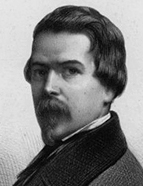

Furthermore, like the Michelet presented by Charles Péguy, Varnhagen is a solitary historian. He doesn't share his work with anyone. He ends up in the archives, where he compiles, collates, copies, and finally leaves his "mark". He subsequently organises the material, disseminates it, and publishes what he chooses, but not before undertaking a theoretical analysis—in his own words, "uniting and combining them into doctrines that make such and such a body," as he explains in a letter. This fondness for archives is clear in an anecdote told in 1903 by Oliveira Lima: he recalls that as a young student of palaeography at the Torre do Tombo and a student of José Basto (who had been one of Alexandre Herculano's assistants on the great Portugaliœ Monumenta Historica [Portugal's Historical Monument]), he used to scrutinise old manuscripts in search of documents that, in his "youthful pretension", he thought could unravel some of the enigmas of Brazilian history. It was with surprise and disappointment that he spotted a small "V" on almost every paper, written discreetly in pencil by a researcher who had preceded him: Varnhagen. Although the IHGB had urged teamwork since its foundation, in practice individual research prevailed. Varnhagen's isolation from his peers was not a specific feature of his intellectual personality, if it weren't for the fact that we could relate it to a certain need to be the first, the initiator, the one credited with laying the foundation. The epithet of Heródoto brasileiro [Brazilian Herodotus] will not be attributed to him by modern historiography by chance. It hardly seems coincidental that Robert Southey, who at one point envisioned his work serving Brazilians as Herodotus' did for Europeans, was severely criticised by Varnhagen. History of Brazil, published in three volumes in the 1810s, would be, according to the commentary found in the first edition of the Historia geral do Brazil published in 1854, unrelated, disorganised, repetitive, and tiring, characteristics responsible for its fragile reception (the lack of a Portuguese translation at the time was simply overlooked by the Brazilian). It's understandable, because Southey, before being a good historian, was, according to Varnhagen's not uninterested precision in the second volume of the História geral do Brasil [General History of Brazil], 1857, an "illustrious poet laureate". At most, the Englishman's work could aspire to the status of a memoir to write the history of Brazil and the Prata countries . Almost a source in and of itself. Maybe that's why he found it so difficult to distance himself from it. It seems that the first history of Brazil should be his, and the first Brazilian historian should be him. It is not that Varnhagen held this view from the outset of his career. Historia geral [General history] was initially thought of as a Geographia Physica do Brazil [Physical Geography of Brazil].
This work is financed by national funds through FCT - Foundation for Science and Technology, I.P, in the scope of the projects UIDB/04311/2020 and UIDP/04311/2020.
